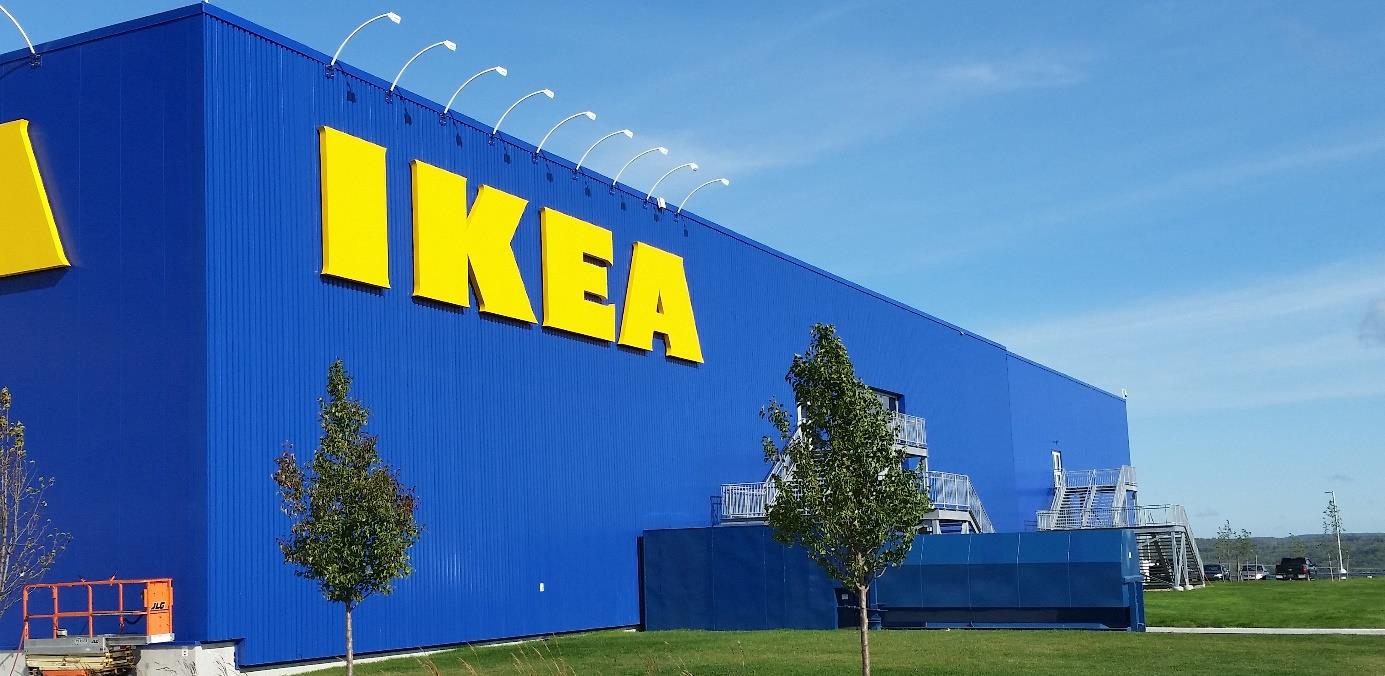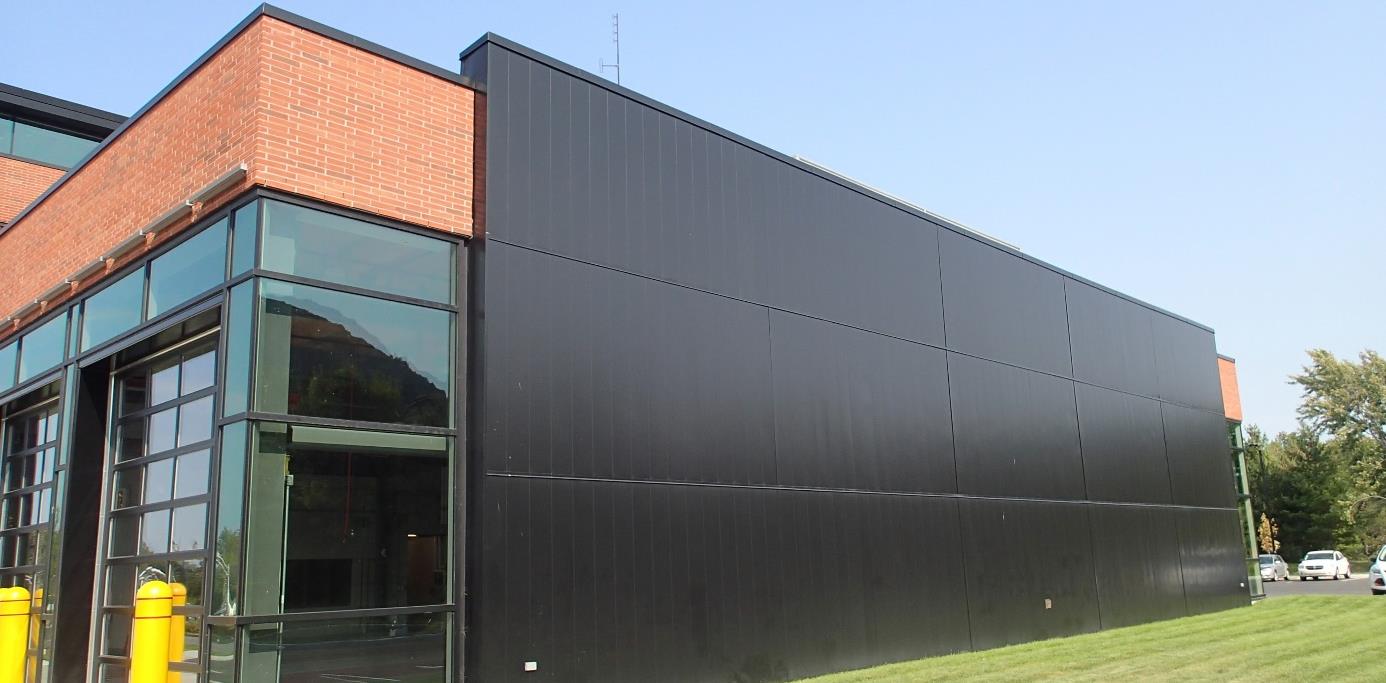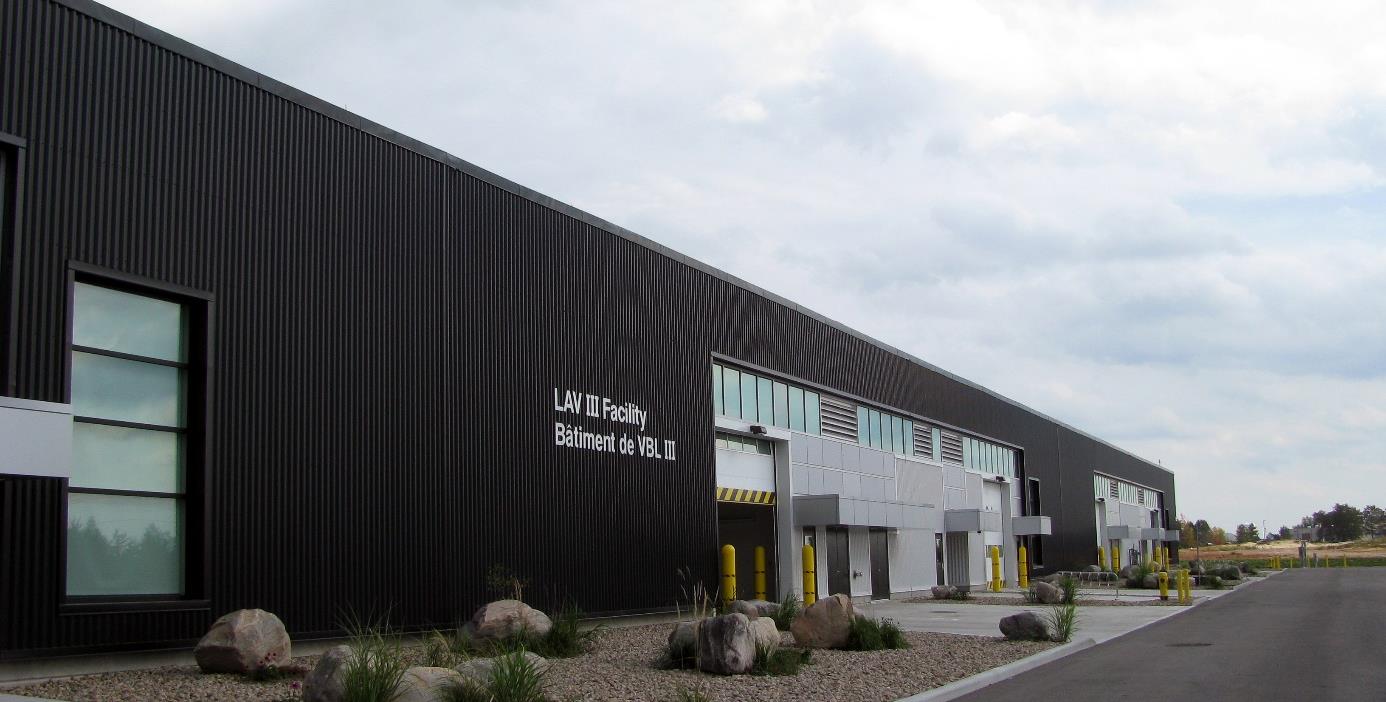Brief Concept Description
Brief concept description While resembling conventional exterior metal facades, unglazed transpired solar collectors (TSC) use a buildings HVAC system to create negative air pressure used to pull air inside the building through a finely perforated, sunfacing metal absorber. TSCs are cost-effective, efficient, simple, aesthetically pleasing systems that require virtually no maintenance over their estimated 40-year useful life.

Figure 10. Close up of MatrixAir® absorber.
Architectural and Technological Integration into the Envelope
Architectural and technological integration into the envelope MatrixAir® TR systems are specifically designed for harmonious building integration with a buildings’ façade, blending seamlessly with its overall look and appearance. Systems may be as conspicuous or as inconspicuous as the building owner desires, since the exterior perforated absorber may be made using a variety of exterior profiles and dark colours and then site-installed in any orientation. Weighing 1-1.5 kg/m2 of collector area, such systems are attached to the new or existing buildings’ structure with a combination of vertical and horizontal framing components designed specific to each project. They also serve to create the air cavity in which the preheated air is collected and directed to the fresh air inlets. No special tools nor training is required of the exterior metal cladding contractors engaged to install such systems in accordance with the engineered MatrixAir® installation drawings provided for each system.
Integration into the Building: System and Comfort
Integration into the building: system and comfort In addition to its ease of architectural integration, transpired solar collectors work seamlessly with the buildings’ heating, ventilation and control systems. Preheated air is ducted to the buildings’ centralized HVAC system via equally spaced air outlets from the collector or via a top mounted plenum running across the top of the collector for distribution within the building. Motorized wall or roof mounted bypass louvers are activated for summer seasonal operation or when preheated air is not required.
Performance is susceptible to elevated ambient wind, thus unit air flow is an important design criterion. Façademounted, metal transpired solar collectors provide optimum return on investment when operated at flow rates of 75 to 165 m3/h per m2 of collector area; the higher unit air flows particularly suited to tall buildings such as multiresidential condominiums.These are not stand-alone systems: while TSC’s will cost effectively contribute 20% and up to 40% of the energy required for ventilation air heating providing a temperature rise of up to 25 °C over ambient temperatures, these systems will require an auxiliary heating source in most installations to ensure comfort of the building occupants.
On average, MatrixAir® systems typically yield 420 to 550 kWh/yr per m2 of collector area. Prefeasibility studies and energy savings estimates of the MatrixAir® solar air heating system may be made using RETScreen® software developed by Natural Resources Canada.

Figure 11. Installation on IKEA, Retail building.

Figure 12. Installation on an emergency services and training facility, Municipal building.

Figure 13. Installation on Light Armoured Vehicle Maintenance Facility, Military building.

Figure 14. Installation on Schluter Systems office building, Industrial building.

Figure 15. Installation on Quebec Animal Pathology Laboratory, Institutional building.
Further Reading
Company website: www.matrixairheating.com